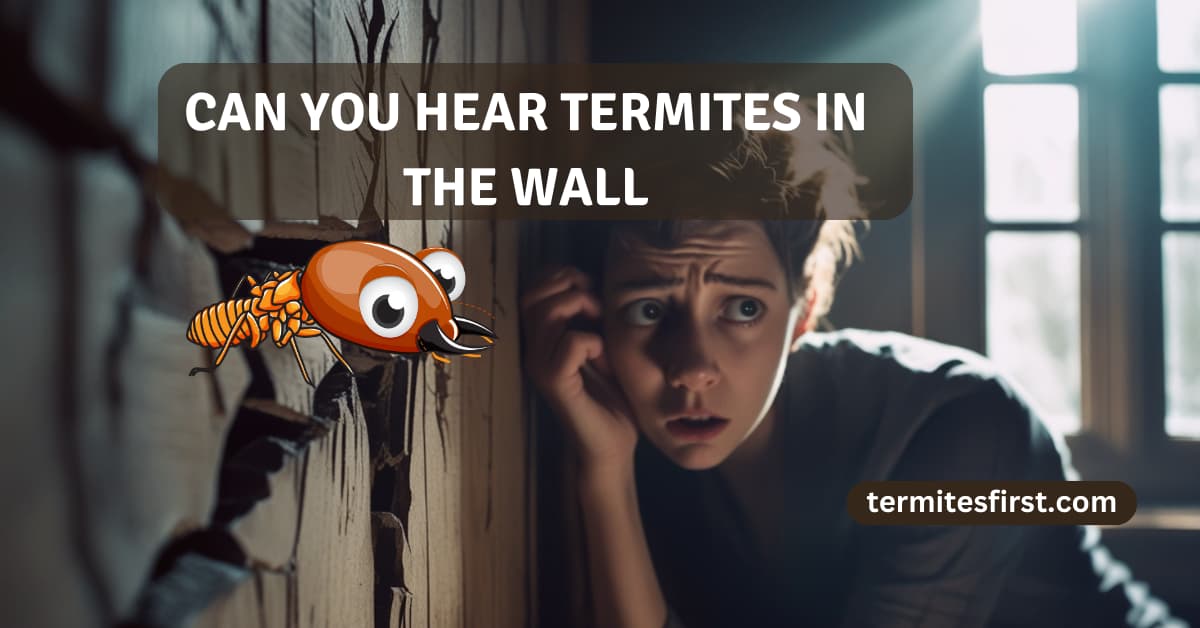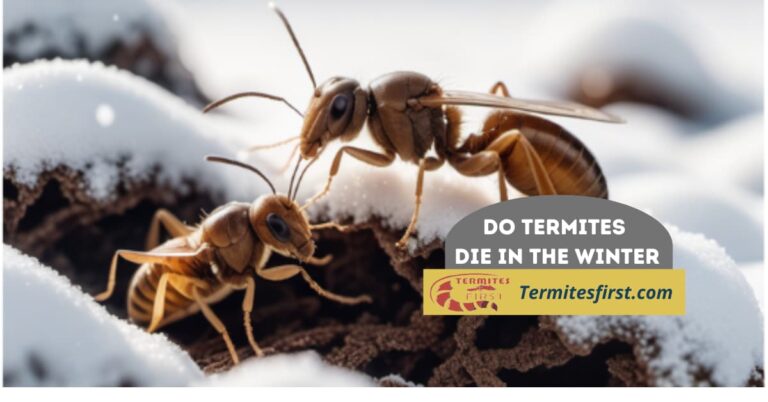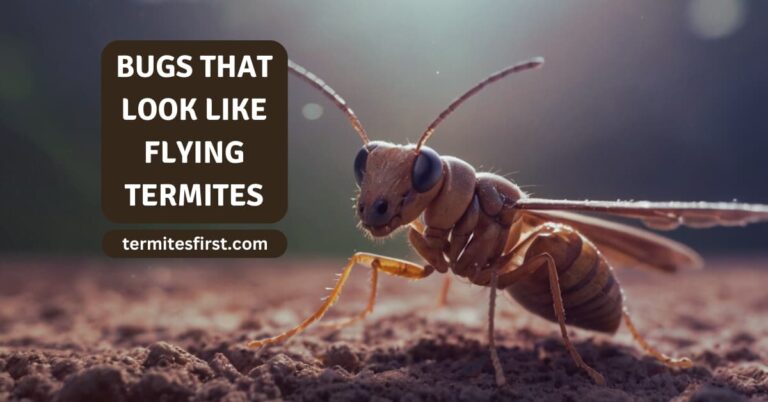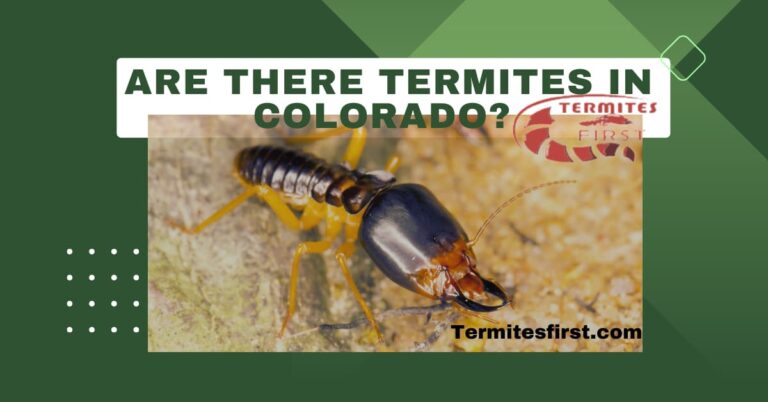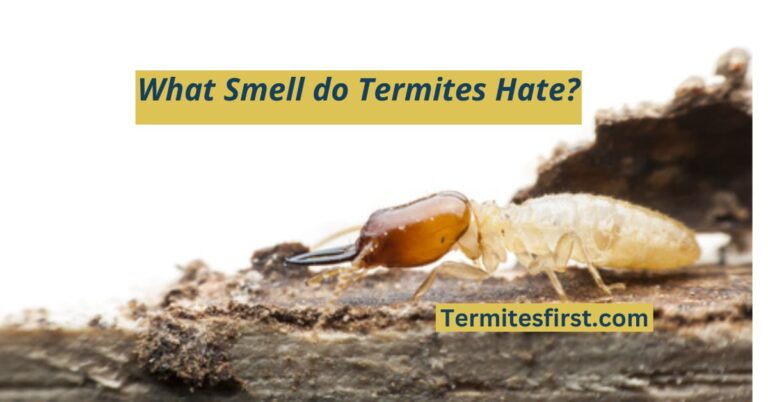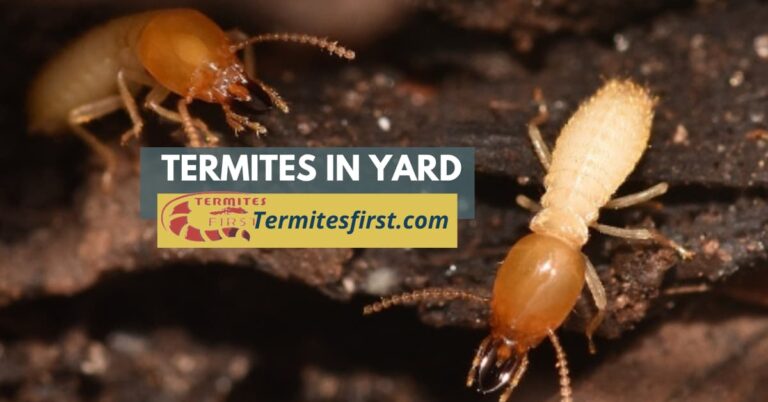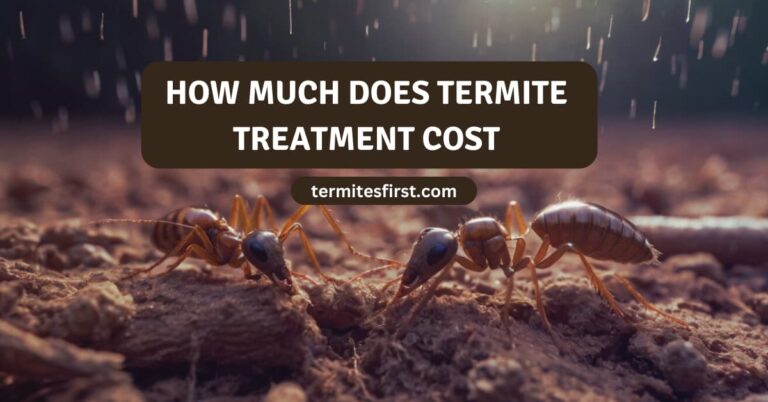Can You Hear Termites in the Wall
As an entomologist who specializes in termites, I can’t help but think about termites every time I hear the faint clicks and rustles in the walls.
Though they aren’t easily seen, these little pests often make a faint cracking sound as they eat their way through the wood. Learning to recognize this subtle noise can assist in early detection and prevention of costly damage.
Understanding these warning sounds is an important step to ensuring your home’s structure is sound and securing your home’s future. My personal experience in this field speaks to the need to listen for these warning signals.
- Termites are important decomposers in ecosystems, so knowing what termites sound like could help you detect them and protect your home against them. Their chewing and movement produce specific sounds that act as signals of presence.
- Identifying tell-tale sounds like head banging and buzzing noise made while swarming can help inform homeowners of possible infestations. These sounds are not always present but come and go depending on the time of day and weather conditions, among other factors.
- Listening for other distinctive termite sounds, such as clicking, tapping, hollow sounds, and swarming activity, can help with early detection. These noises are quiet but powerful indicators of active termites and resulting destruction.
- Aside from auditory cues, visual indicators such as mud tubes and fallen wings are crucial in identifying termite infestations. A multi-sensory approach using both sound and sight is required for successful identification.
- It’s critical to make the distinction between termite sounds and other common household pests to prevent misidentification. Knowing these differences makes sure you have the right detection, and the right intervention.
- When you suspect termite activity, seek professional help immediately. National pest control experts provide comprehensive inspections and customized treatments to get rid of termites and other pests and keep your home safe from damaging infestations.
Understanding Termite Sounds
What Are Termites?
Termites are small but mighty insects that are only 0.03 to 0.4 inches long. Termites perform an essential function within ecosystems, helping break down organic materials. They make excellent neighbors. They are natural decomposers, recycling nutrients into the environment.
Of all the species of termites, subterranean and drywood termites are the most common. Subterranean termites create their colonies underground, while drywood termites like to create their colonies within the wood itself. These insects might be mistaken for ants, but termites have distinct physical characteristics, like straight antennae and uniform waistlines, that set them apart.
Their ability to break down cellulose in wood is wonderful for the environment and a terrible danger to houses.
How Termites Make Noise
Termites make noises mainly due to their nonstop chomping and tunneling around in wood structures. The sound is very quiet, similar to the sound of crinkling dry paper. It takes thousands of termites working in unison to produce this sound.
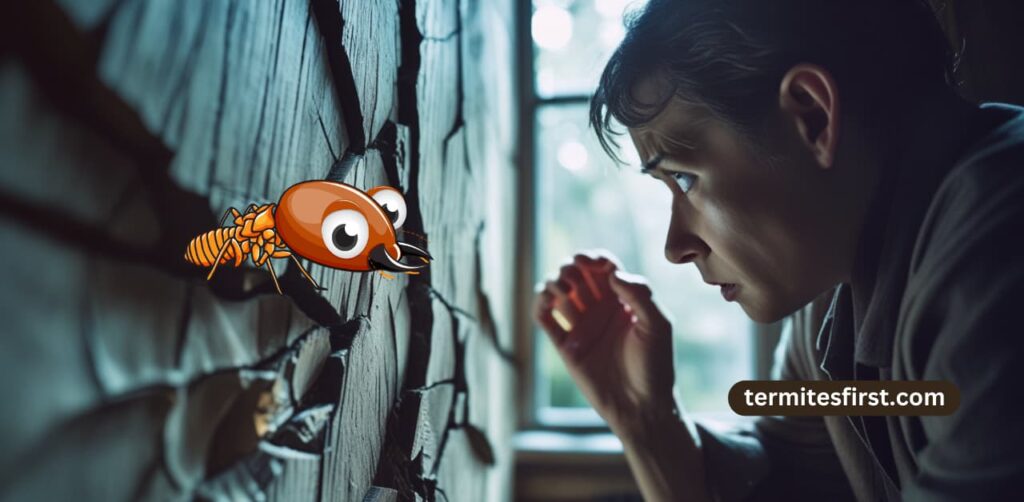
That’s because a colony can be from 60,000 to more than a million termites! Of course, different species of termites will make different sounds based on their behaviors and the environments they live in. The head-banging noise is an effective means of communication among them.
Usually they use it to warn the entire colony of external threats or internal disruption. Such sound production is not easily noticeable but is accentuated in the still of night.
Common Sounds of Termites
Termites have a variety of sounds including gentle munching all the way to head-banging and buzzing. As termites chew through wood, they make a distinctive chewing sound. They drum their heads on tunnel walls to talk to each other.
You can hear this rustling sound best during peak hours though, like at night. It further grows into a presence when the colony is under siege. The buzzing noise you might have heard is often linked to swarming termites looking to reproduce in the spring.
While these noises are typically quite subtle, they become apparent when there are millions of termites making sounds in an otherwise quiet environment.
Do Termites Make Constant Noise?
Termites produce sounds 24/7, often described as rats or mice. Things like the time of day and weather conditions, such as wind or rain, affect how often these sounds are produced. Since termites are most active at night, the quiet of night can magnify their rustling noises.
If you’re a homeowner, you may be more likely to hear these sounds when all else has gone quiet. Termites may be busy 24/7, but their song is much easier to hear in a calm environment.
In fact, termite activity results in billions of dollars in structural damage annually. In the U.S. Alone, the estimated cost is a staggering $5 billion.
Identifying Termite Noises in Walls
Termites are tricky little pests that can do thousands of dollars in damage before you even realize they’ve invaded. Identifying the sounds they produce can save you a great deal of heartache and funds. More than one in four homes in the US must contend with a termite invasion each year.
By identifying the noises they produce, you can take an important first step in avoiding serious damage. Here’s a rundown of what to listen for:
- A loud and distinct sound, akin to a rhythmic tap, echoes through the walls. This distinct noise originates from soldier termites as they bang their heads or jaws against wood tunnels. These vibrations are thought to be used as a communication method within the colony to alert one another of potential threats or food sources.
Identifying this noise is the first step in an early warning sign. It serves as a wake-up call for homeowners to act before the damage escalates.
- During the swarming season, termites produce a faint buzzing sound. This noise is unlike other termite sounds as it has to do with reproductive activity. If you hear this, it means that swarming is already in process, which may mean that a large, mature colony is close by.
Around spring, you may notice a cracking or buzzing sound. This sound indicates that termites are present and could be getting ready to establish a new colony.
- These indicate termites have done significant damage. If you knock on wood and it sounds hollow, that could indicate termites have burrowed through the center. It’s important to distinguish these from regular house creaks.
If you think you hear hollow sounds, it’s a good idea to investigate the wood more deeply to determine just how extensive the damage is.
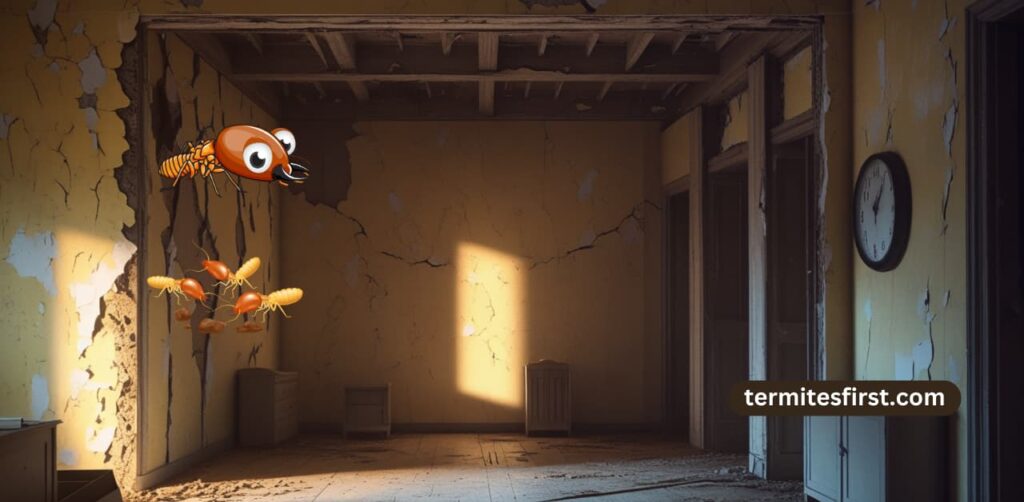
- As termites feed and tunnel through wood, they make subtle clicking and tapping sounds. These sounds can be hard to hear but are key signs of a termite infestation. Quiet surroundings are ideal for listening to these noises, which will allow you to identify the issue sooner rather than later.
- During mating season, the sounds of winged termite swarmers are noticeable. This action indicates a mature termite colony is nearby. The sooner you address swarming the better, stopping a possible larger infestation from taking hold in your home.
Termite noises are usually most detectable at night when the house is quiet. Recording any unusual sounds will go a long way in determining whether or not you have an infestation.
Knowing what termites sound like is important because it may be the first indication of an otherwise hidden issue. Without immediate action, termites can inflict serious damage, resulting in expensive repairs.
It’s all about being vigilant and taking action to protect your home from these sneaky invaders.
Signs Indicating Termite Presence
Catching termites early will save you a lot of trouble and expense. Here are some signs that suggest a termite infestation:
- Mud tubes on walls or wooden surfaces
- Fallen wings near windows or doors
- Hollow-sounding wood when tapped
- Small, pushpin-sized holes in drywall
- Unusual patterns in wood that appear maze-like
Termite infestations can be notoriously difficult to detect as these pests tend to leave no outwardly visible signs. They can remain undetected for years, relentlessly devouring wood 24/7 without a break. The appearance of mud tubes and discarded wings can provide important, telltale visual signs.
These signs can help you with sound detection, which is the practice of listening for the telltale noises termites make. A multi-faceted approach is key because just using one method could leave these sneaky squatters behind.
Sounds That Suggest Infestation
Tapping and listening for certain sounds is an important component of termite detection. You may notice a soft clicking or crackling noise, usually heard from inside your walls. The nature of these sounds may change depending on the severity of the infestation.
For example, a larger infestation may cause louder, more frequent sounds. All of these signs should regularly be listened for as you maintain your home. Knowing what termites sound like is one of the first signs of discovering a hidden infestation so staying alert is essential.
Differences Between Termite and Other Insect Noises
It can be difficult to identify termite noises from other pests in your home. Termite sounds are generally softer and less noticeable than ants or bees. For example, ants are typically more subtle, whereas bees make a very recognizable buzzing.
Knowing the difference can save homeowners from mistaking termites for non-destructive pests. Additionally, the subtle scratching of termites can sound like crinkling paper, resulting in misidentification. Understanding these differences is key to accurate identification.
When to Seek Professional Help
There are some situations that require the help of an exterminator. If you happen to see mud tubes or maze-like wood patterns, get to work right away. If you notice regular termite activity, don’t hesitate to bring in the professionals!
A trained termite professional can help give you a complete picture of your home, spotting active infestations and future threats. Timely intervention is essential, because termites can do extensive structural damage.
What makes these colonies a serious threat is their potential size – subterranean colonies, in particular, can become immense. In fact, termites help U.S. Property owners lose more than $5 billion every year. By acting immediately, you can avoid widespread damage and costly repairs.
Actions for Suspected Termite Activity
Once you know there is a termite infestation in your walls, acting quickly is important. Here’s a quick list of immediate steps you should consider:
- Pay attention to the warning signs. Listen carefully for signs of infestation. Termites create a subtle rustling sound that can sometimes be heard from as little as two feet away from the infested wall.
- Take pictures of any damage and evidence, such as mud tubes or hollow-sounding wood.
- Call a professional pest control service such as Pest Aid to have them come out immediately.
- Call in a pest control professional, who can help you determine the level of your suspected termite activity.
Taking proactive steps to prevent and address termite activity can help you avoid serious and costly damage. Termites may be difficult to detect; the destruction they can cause is significant. A preemptive approach means having regular inspections, catching signs early, and keeping an eye on areas prone to infestation.
Recording what you find isn’t just for the paper trail. It’s such a simple, yet critical step to helping pest control experts gain a better understanding of the problem. Keeping a careful record will help you see the full scope of the issue and help you create smarter treatment plans.
Inspect Your Home Thoroughly
Whatever the situation, you must get a detailed inspection when you believe termites are at work. Look for potential entry points to the home. One of the first signs of termite infestation is mud tubes.
Look for wood that may be damaged and sound hollow when tapped. It’s even more critical to look at the interior and exterior spaces together. Look carefully at the foundation, windows, and door frames, all of which are popular gateways for termites.
Contact a Pest Control Expert
Hiring a pest control professional provides numerous benefits. Only professionals have the training, experience, and tools to detect the presence of termites properly. They can help you determine the best and most effective treatment options for your unique situation.
Beyond immediate control, experts like those at Orkin can offer prevention strategies to protect your home from future infestations. When you trust a reputable service, you’ll get detailed inspections and the peace of mind that comes with them.
Implement Preventive Measures
To reduce the risk of termite infestations, consider these preventive measures:
- Make sure you have good drainage around your property to prevent moisture buildup.
- Eliminate wood-to-soil contact by placing vertical concrete or metal barriers in the ground.
- Perform routine inspections and maintenance of your home’s exterior to catch signs of termites as early as possible.
- Consult with your nearby Orkin locations to find out much more about how you can stop termites.
Maintaining a proactive stance means being aware and prepared through regular inspections and maintenance. This proactive method saves you money and keeps your home safe from termite destruction.
Plus, it saves you time and money in the long term. Keep in mind, termites are not only an issue down under; they can wreak havoc on homes all over the globe, so staying vigilant is paramount.
Conclusion
Though termites may cause considerable damage in silence, knowing what they sound like will allow you to detect them before it’s too late. I found that the faintest click or rustle from inside a wall usually indicates their presence. Warm temperatures and moist wood attract them, so look for mud tubes, droppings, or wood that’s been chewed on. Seeing these signs before they get too far along saves you time and money. Annual inspections and timely treatments help protect homes from damage. Trust your instincts and call the pros when you think you’ve found termites. With tools and expert trained eyes, they can spot the infestations before they get out of hand. Just like you heard it here first, prevention is the name of the game.
Let’s make sure our homes are protected by educating ourselves and acting quickly. If you are hearing unusual sounds or seeing signs of termites, contact a professional right away. Your vigilance is their first line of defense.
Frequently Asked Questions
Lastly, can you hear termites in the wall? These pests produce distinct termite sounds, like tiny clicks and rustles, as they chew through timber or communicate.
Termites may produce distinct termite sounds, resembling soft clicking noises or crackling sounds, often compared to the noise of rice crispies popping.
The best chance of hearing distinct termite sounds is in a quiet house or building with a wood foundation, like walls, floors, or ceilings.
Not true, termite noises are typically quite quiet, often producing faint clicking sounds. Though you may need to get your ear right up to the wall to listen.
Termites are most active at night, which is when you can hear distinct termite sounds like clicking noises and hollow sounds most clearly.
Of course, not every species of termite creates noise, but many common species that infest our homes, like Formosan termites, produce loud sounds!
What should you do if you hear termite sounds in your wall?
If you can hear distinct termite sounds like clicking noises, reach out to a pest control pro as soon as possible. The sooner you catch them, the less termite damage there will be.

